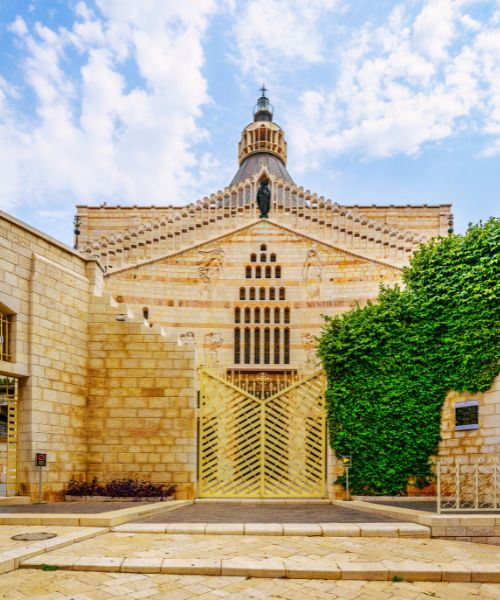St. Anne’s Church: Timeless Beauty. Sacred Serenity.
Introduction
St. Anne’s Church is believed to be the birthplace of the Virgin Mary. The church is one of a handful of churches that remain standing from the time of the Crusader’s from the 12th century CE.

Location St. Anne's Church
St. Anne’s Church is located within the boundaries of the Old City, next to the Lions’ Gate and proximal to the iconic Pools of Bethesda.
Biblical Context
St. Anne’s Church finds its roots intertwined with the rich biblical narratives that have shaped the course of human history. This sacred site is believed to be the birthplace of the Virgin Mary, making it an integral part of Christian heritage. According to early Christian traditions and apocryphal texts, such as the Protoevangelium of James, the birth of Mary took place in Jerusalem.
The belief in St. Anne’s Church as the birthplace of the Virgin Mary is also supported by the proximity of the site to the Pools of Bethesda, where Mary’s parents, Joachim and Anne, are said to have encountered each other. The story goes that after years of barrenness, Anne received a divine message that she would conceive and bear a child. In gratitude, Anne and Joachim dedicated Mary to God, making her birthplace of great significance to Christian believers.

Picture credit: Shmulikc1204, CC BY-SA 4.0 via Wikimedia Commons
The History of the Church
The present-day St. Anne’s Church in holds a rich historical background that is shaped by various conquerors and religious communities.
During the Crusader period in the 12th century CE, a group of French knights known as the Order of Saint Lazarus established a hospital near the site believed to be the birthplace of the Virgin Mary. The hospital was dedicated to St. Anne, the mother of Mary.
In 1138, Queen Melisende of Jerusalem granted the site to the Benedictine Sisters, who constructed a small church dedicated to St. Anne. This modest church was known as the Church of St. Anne.
In the 12th and 13th centuries CE, the church underwent multiple changes due to the political and military conflicts that swept through the region. After the fall of Jerusalem to Saladin in 1187, the church was transformed into a madrasa (Islamic religious school) by the Ayyubid dynasty. However, during the brief period of Christian rule in Jerusalem between 1229 and 1244, the church was restored and returned to Christian hands.
In the following years, control of Jerusalem shifted several times, passing from Ayyubids to Mamluks and eventually to the Ottomans in the 16th century. Throughout these tumultuous times, the church faced periods of neglect and suffered from damages inflicted by various conflicts. During these years, Christian pilgrims had limited access to the grotto in the church.
In the mid-19th century, the Ottoman authorities granted the French government permission to renovate of church. Work began in 1878, led by French architect Christophe-Edouard Mauss.
The church’s architectural elements include beautiful arches, soaring ceilings, and ornate decorations. Its acoustic properties are particularly remarkable, as the church is renowned for its exceptional musical acoustics.



Sources and Additional Reading
Church of Saint Anne in Jerusalem – Official Site
Church of Saint Anne, Jerusalem – Wikipedia
Nearby Sites
- The Pool of Bethesda: Located adjacent to St. Anne’s Church, the Pool of Bethesda marks that place where Jesus healed a paralyzed man at this pool. Visitors can explore the ruins of the ancient pool and reflect upon the healing power of faith.
- The Church of Flagellation: Located within the same complex as St. Anne’s Church, and part of the Via Dolorosa commemorates the flogging of Jesus before his crucifixion.
- Lions’ Gate: The Lions’ Gate is one of the eastern entrances to the Old City of Jerusalem. The gate is flanked by iconic lion sculptures, symbolizing the Mamluk Sultan Bybars.
- The Convent of the Sisters of Zion: This 19th-century complex houses the Ecce Homo Basilica, believed to be the location where Pontius Pilate presented Jesus to the crowd.



